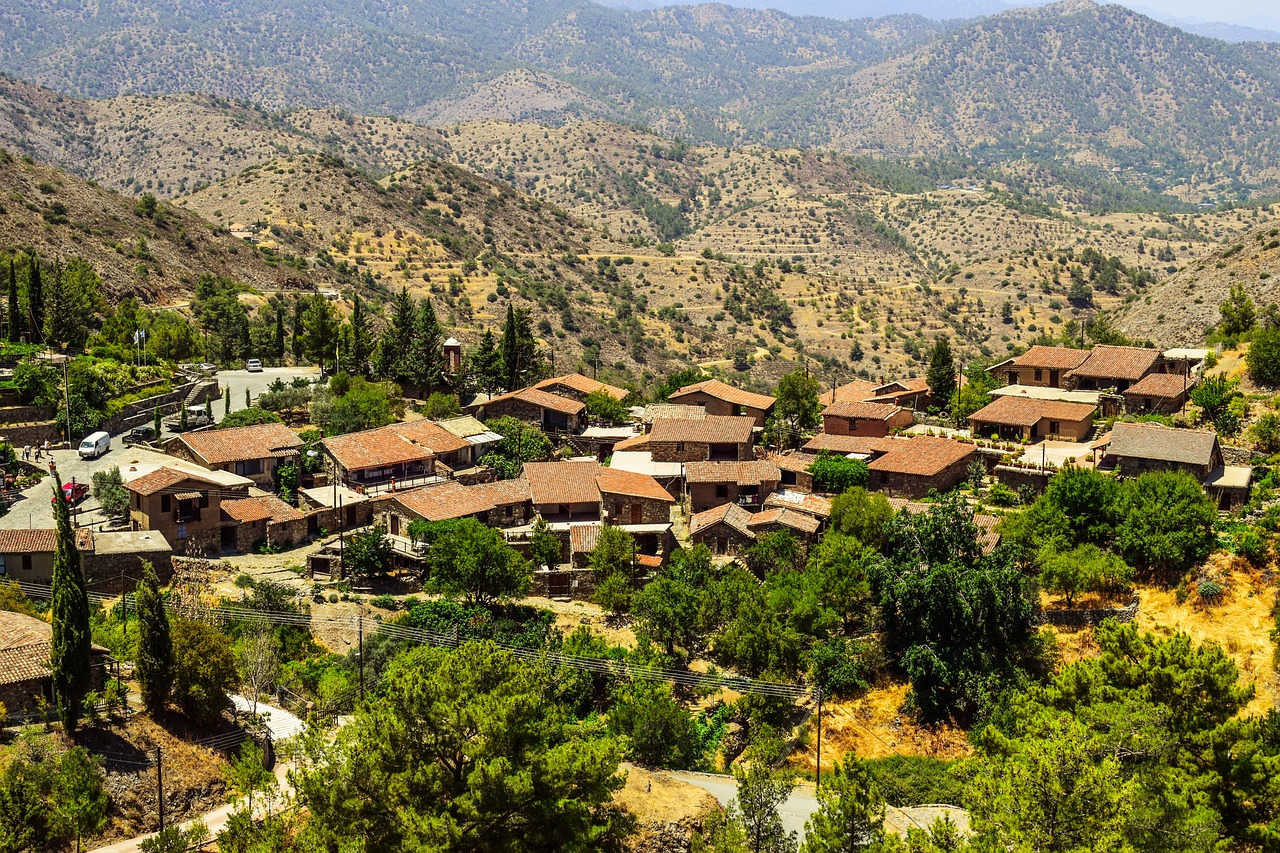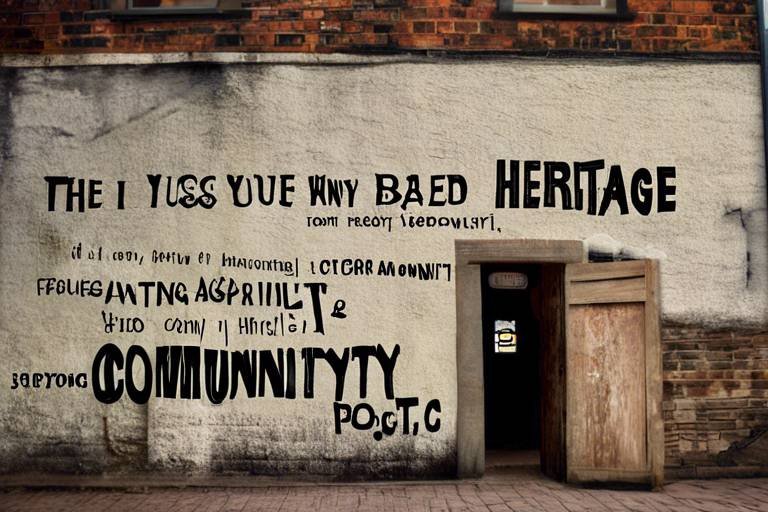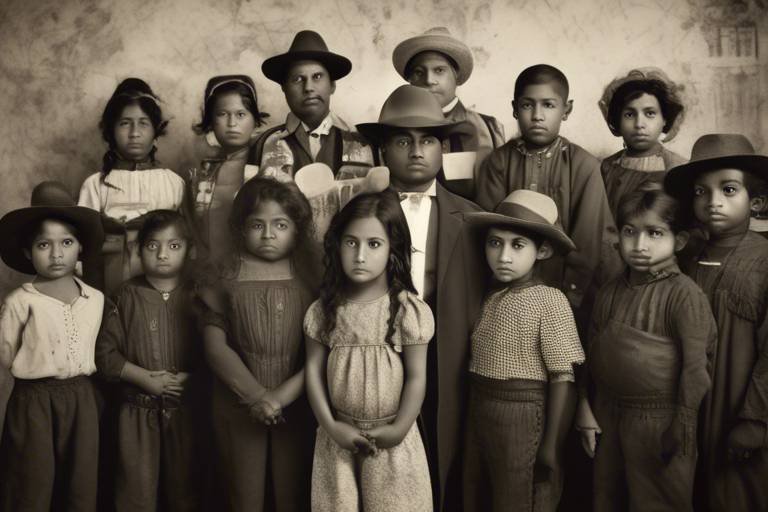The Importance of Community-Based Heritage Projects
Community-based heritage projects are vital for preserving the rich history and cultural identity of local communities. These projects serve as a bridge between the past and the present, ensuring that the unique stories, traditions, and landmarks that define a community are safeguarded for future generations. By actively involving residents in the preservation process, these projects not only protect historical narratives but also foster a sense of pride and ownership over shared heritage assets.

Preservation of Local History
Community-based heritage projects play a crucial role in preserving local history and culture, engaging communities in meaningful ways, and fostering a sense of pride and ownership over shared heritage assets. These projects empower individuals to actively participate in preserving their heritage.
Preservation of local history through community-based heritage projects is vital in safeguarding the unique stories, traditions, and landmarks that define a community's identity. By actively involving local residents in preservation efforts, these projects ensure that important historical narratives are not lost to time.

Engagement and Education
Engagement and education are at the core of community-based heritage projects, offering individuals the chance to immerse themselves in their local history and culture. By actively participating in preservation efforts, community members not only learn about their heritage but also become stewards of it. These projects often include interactive workshops, storytelling sessions, and guided tours that cater to diverse learning styles and preferences. Through hands-on experiences and engaging activities, participants of all ages can deepen their understanding of the past and develop a strong connection to their community's roots.

Strengthening Community Bonds
Participating in heritage projects is like weaving a tapestry of connections that bind community members together. Imagine each individual thread representing a person, a story, a tradition, or a memory. As these threads intertwine and overlap, they create a vibrant and intricate pattern that symbolizes the unity and shared history of a community.
Collaborating on heritage initiatives not only preserves physical landmarks but also nurtures intangible bonds among residents. It's akin to planting seeds of camaraderie and watching them grow into strong roots that anchor the community in times of change and challenge. By working hand in hand to protect and celebrate their heritage, individuals forge relationships based on mutual respect, trust, and a common goal.
Moreover, heritage projects provide a platform for community members to engage in meaningful dialogue, share personal stories, and pass down traditions to future generations. Picture a gathering where elders impart wisdom to the youth, where neighbors swap tales of bygone days, and where newcomers are welcomed with open arms into the tapestry of community life. These interactions not only strengthen existing bonds but also create new connections that enrich the social tapestry of the neighborhood.
Through the collective effort of preserving heritage, individuals find a sense of belonging and purpose within their community. It's like being part of a living history book where every resident has a chapter to contribute. By recognizing and honoring the diverse backgrounds and experiences of its members, a community becomes a mosaic of stories, united by a shared commitment to safeguarding its heritage for generations to come.

Empowering Local Voices
Community-based heritage projects empower local residents to play an active role in shaping the narrative of their own history. By involving community members in decision-making processes, these projects amplify diverse voices and perspectives within the community.
Through collaborative efforts, individuals are given a platform to share their stories, traditions, and experiences, ensuring that a wide range of perspectives are represented. This inclusivity fosters a sense of belonging and ownership over shared heritage assets, creating a stronger bond between community members.
By empowering local voices, community-based heritage projects not only preserve historical narratives but also encourage dialogue, understanding, and respect among residents. This engagement enhances the fabric of the community, fostering a sense of unity and pride in local heritage.

Enhancing Cultural Tourism
Community-based heritage projects play a significant role in enhancing cultural tourism by showcasing the unique and authentic heritage of a region. These projects not only preserve local traditions and landmarks but also promote them as attractions for visitors. By highlighting the cultural richness of a community, heritage projects draw tourists who seek immersive experiences and a deeper understanding of the area they are visiting.
One way community-based heritage projects enhance cultural tourism is by organizing events and activities that showcase traditional arts, crafts, music, and cuisine. These experiences offer visitors a taste of the local culture and provide opportunities for cultural exchange between residents and tourists. Additionally, heritage projects often collaborate with local businesses to promote cultural tourism, creating economic opportunities for the community.
Moreover, by preserving and promoting cultural landmarks such as historic buildings, museums, and cultural sites, community-based heritage projects attract heritage tourists who are interested in exploring the history and traditions of a place. These projects contribute to the overall tourism appeal of a region, attracting a diverse range of visitors and boosting the local economy.

Sustainability and Conservation
Engaging in heritage projects encourages sustainable practices and conservation efforts within communities. By promoting the preservation of historic buildings, landscapes, and artifacts, these projects support environmental stewardship and long-term sustainability. Through initiatives like recycling programs, energy-efficient practices, and the restoration of eco-friendly spaces, community-based heritage projects not only preserve the past but also contribute to a greener future.

Celebrating Diversity and Inclusion
Community-based heritage projects play a vital role in celebrating the diverse cultural heritage of a community. By acknowledging and honoring the contributions of different ethnic groups, traditions, and histories, these projects promote inclusivity and respect for cultural differences.
Through engaging in community-based heritage initiatives, individuals from various backgrounds come together to share their unique stories and experiences. This celebration of diversity not only enriches the collective heritage of the community but also fosters a sense of belonging and unity among all members.
Furthermore, these projects serve as a platform for highlighting the cultural richness and vibrancy that exists within the community. By showcasing a wide range of traditions, arts, and customs, community-based heritage projects create opportunities for individuals to learn from one another and appreciate the unique tapestry of cultures present.
Moreover, celebrating diversity and inclusion through heritage projects helps break down barriers and build bridges between different groups. By fostering a spirit of openness and acceptance, these initiatives create a welcoming environment where all community members feel valued and respected.
In essence, community-based heritage projects that focus on celebrating diversity and inclusion not only preserve the past but also pave the way for a more harmonious and understanding future for generations to come.
Frequently Asked Questions
- What types of community-based heritage projects are common?
Common community-based heritage projects include historical preservation initiatives, cultural festivals, oral history projects, art installations, and educational workshops.
- How can I get involved in community-based heritage projects?
You can get involved in community-based heritage projects by volunteering your time, attending events and workshops, donating resources, or sharing your own knowledge and experiences related to local history and culture.
- Why are community-based heritage projects important?
Community-based heritage projects are important because they help preserve local history, engage communities, strengthen bonds, empower local voices, enhance cultural tourism, promote sustainability, celebrate diversity, and foster inclusivity within communities.
- What are the benefits of participating in community-based heritage projects?
Participating in community-based heritage projects allows individuals to connect with their heritage, learn new skills, contribute to the community, build relationships, and make a positive impact on preserving and promoting local history and culture.
- How do community-based heritage projects contribute to sustainability?
Community-based heritage projects contribute to sustainability by promoting the conservation of historic buildings, landscapes, and artifacts, encouraging environmentally-friendly practices, and fostering a sense of responsibility towards preserving cultural heritage for future generations.



















